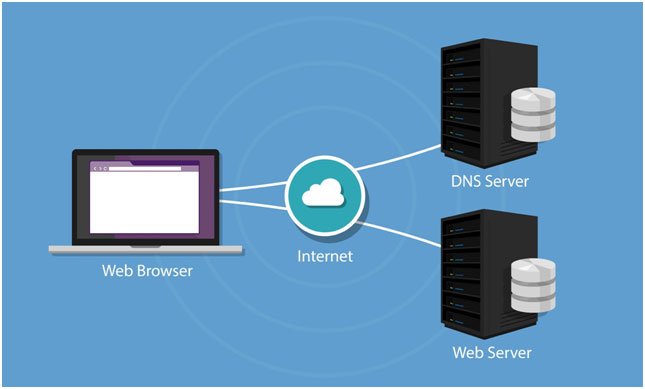Should You Transfer Your Domain Name or Change your Server?

Domains are commonly acquired to direct people to a website, but that’s not their only function. There are naturally many things that can be done with a domain, other than build a website for it.
Even when a website is built around a domain name, a lot could be happening in the background that doesn’t actually affect the site. However, other processes may have the opposite effect.
Some of these domain-related occurrences include transferring to a new registrar, changing name servers, parking the domain, and even selling the domain name.
It’s easy to become confused over the technicalities surrounding some domain operations. Part of this confusion relates to transferring domains from one registrar to another and changing nameservers. These two processes are often misinterpreted and in most cases, one is taken for the other.
There are different reasons why a domain name needs to be transferred, but in some cases, transferring is pointless, as changing the nameservers will suffice.
In the case of changing nameservers, circumstances trigger the process. We are going to clarify what domain name transfer and changing of nameservers mean, when they are needed, and which operation is ideal for each given situation.
Firstly, what are registrars?
Domain name registrars are companies responsible for registering domains, so that it is unique to the registrant (owner of the domain name) and cannot be owned by anyone else.
A company must be accredited by a registry in charge of Top Level Domains or by the Internet Corporation for Assigned Names and Numbers (ICANN) to be able to legitimately sell or register domain names.
Popular domain name registrars include GoDaddy and NameCheap. Most web hosting companies also offer domain registration as part of their services, such as Hostgator and Freeparking domain registration.
Domain Name Transfer
Domain name transfer involves the process of handing over a domain name from the current registrar to another one.
Once the name has been successfully transferred, the new registrar will be responsible for maintaining all relevant information concerned with the domain name.
Prerequisites for transferring domain names
Before transferring a domain name, there are boxes that need to be checked to ensure you’re not making things complicated for yourself. Some of the prerequisites include:
- Making sure your WHOIS info is up-to-date and accurate
- You might need to unblock your WHOIS privacy protection and require an authorisation code before making the switch
- Ensuring your domain name is up to 60 days old and has not gone through any other transfer process within the past 60 days
- Confirming if the name servers need to be changed (more of this below) before you can transfer the domain
- You might also need to change your email service if it is currently tied to your domain, as during the transfer process, there’s a chance you may lose access. So, create an email address on another service like Yahoo or Gmail and update it as the contact on your domain information
What are the reasons for transferring a domain name?
One great thing about domain names is that once you’ve made a purchase, you’re not stuck with the same registrar for life. You can transfer whenever you choose. Here are the main reasons for changing your registrar:
- You sold a domain name and wish to transfer it to the buyer.
- You’re unhappy with the pricing and offers of your current registrar.
- You’ve found better offers from another registrar.
- You wish to use your web host company as your registrar.
- You purchased a domain name from a different registrar and wish to use just one registrar for all your domains.
The process of transferring your domain name
The procedure begins with your present registrar. Firstly, submit a request to transfer your domain name to another service and you’ll be handed a number of procedures to follow on their side. Your destination registrar will also give a set of steps to follow from their own end.
The general process varies according to the registrar you’re moving to and the one you’re moving from.
According to their set rules, your transfer may be rejected if you don’t do things correctly, so make sure you are accurately following the steps provided by each registrar.
The transfer process is normally completed in a few days, as there are measures in place to avoid unauthorised transfers.
What are nameservers?
Nameservers are servers of a web host responsible for pointing your domain name to where your website is currently hosted.
This means that when a web user types in your domain name in the address bar, it is the nameserver’s duty to direct the browser to your website via the use of DNS softwares installed on web host servers to load the page. Each domain name is required to have two name servers assigned.

The nameserver is actually an IP address and they normally take the following form:
ns1.domainofyourhost.com
ns2.domainofyourhost.com
Note that both nameservers of your webhost must be designated to a domain.
Changing Nameservers
Changing nameservers involves altering your current domain configurations to point to your web host, especially when you are migrating to a new webhost.
Why do you need to change nameservers?
There are a number of reasons for changing nameservers, which have often been confused for transferring domain names.
Although some of the reasons may be the same, the processes are to put two entirely different functions in place. Here are a few reasons for changing nameservers:
1. You’re using a different registrar and web host
When using a seperate registrar to your web host, you need to provide the domains that will point your domain name to your web host’s server on your registrar account.
When you use the same web host as your registrar, then you probably won’t have to assign name servers, though in some cases, you might have to. You’ll have to ask your service provider for clarification.
2. If you’ve just bought a domain from a previous owner
You’ll have to point your newly acquired domain to your own web host, as it will likely be currently pointing to a different web host.
3. You’re changing web host companies
This is a no-brainer. Transferring your website to another web host effectively means you should point to the servers of your new hosting company.
The nameserver changing process
The process is quite straightforward. Once you have the IP address and subdomains provided by your webhost, you can simply login to your registrar account and input the new information.
How long will it take for the nameserver change to take effect?
Normally, it takes four to eight hours for the change to take effect, but in some cases, it can take two to three days. This delay period is known as ‘DNS propagation’, where the Domain Name Systems and ISP nodes across the world are updated over time.
Conclusion
You now know when you need to transfer your domain or simply change your nameservers. Though this has posed difficulties – especially to new site owners – it is actually quite straightforward when you look more closely.
Remember there are unusual cases where you need to change or update your nameserver when transferring your registrar.

